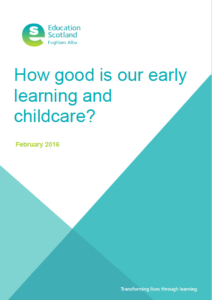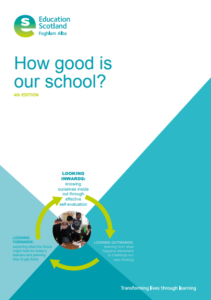QI 1.1 p21
Challenge Question
How well do we involve all stakeholders (children, staff, parents and carers, families and partners) in self-evaluation and planning for improvement?
QI 1.2 p22
Level 5 Illustration
We provide a wide range of opportunities and support to ensure children and young people can take responsibility for their own learning, successes and achievements. Our learners are developing the necessary resilience and confidence to enable them to make decisions about their own learning and to lead others’ learning. They demonstrate this in a range of learning contexts within the school and community.”
QI 1.3 p25
Features of Effective Practice
Pupils…are all involved in the creation and ongoing review of the vision, aims and values of the school.”
QI2.3 p37
Features of Highly Effective Practice:
Learners play an active role in the school and wider community and regularly take on leadership roles, including leading learning.
QI 3.1 p49
Features of Highly Effective Practice:
Staff and partners have created an environment where children and young people feel listened to and are secure in their ability to discuss personal and sensitive aspects of their lives because they feel cared about.
QI 3.1 p49
Challenge Question
How well do we listen to and involve children and young people in making decisions about their wellbeing, their lives and their future?
p68
Appendix 5
Learner voice and participation in development and evaluation activities which improve the provision is a significant feature of highly effective practice.



